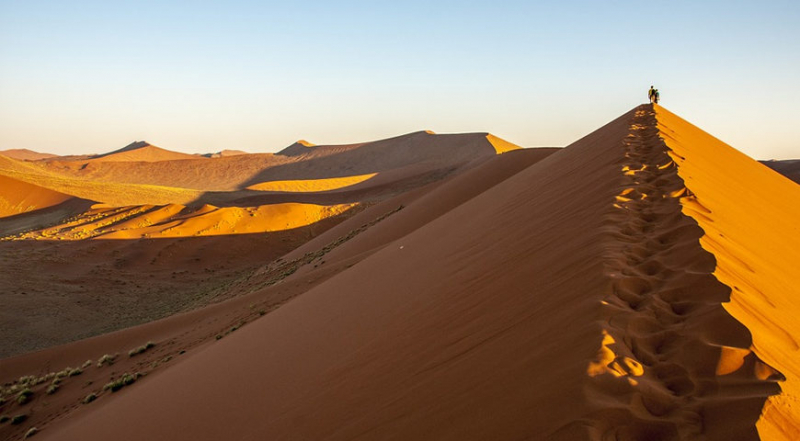Namibia is home to the world’s oldest desert
The Namib Desert, one of the world's oldest and largest, stretches inland from the Atlantic Ocean, encompassing large swaths of Namibia as well as parts of Angola and South Africa. This arid ecoregion is made up of shifting sand dunes, gravel plains, and rugged mountains. The Namib Desert, the world's oldest desert, has existed for at least 55 million years, with no surface water but many dry riverbeds.
Surprisingly, this arid hotspot supports a diverse range of plants and animals, some of which are unique to the world. In these vegetated riverbeds, a few ungulates, such as Hartmann's zebras, live. The south of the desert is very dry, with no dry riverbeds; the gemsbok is the only large mammal that can survive in this harsh climate. An interesting fact about Namibia is that thick fogs are common along the coast, and they are the desert's lifeblood, providing enough moisture for a variety of interesting, well-adapted animal species to thrive.












